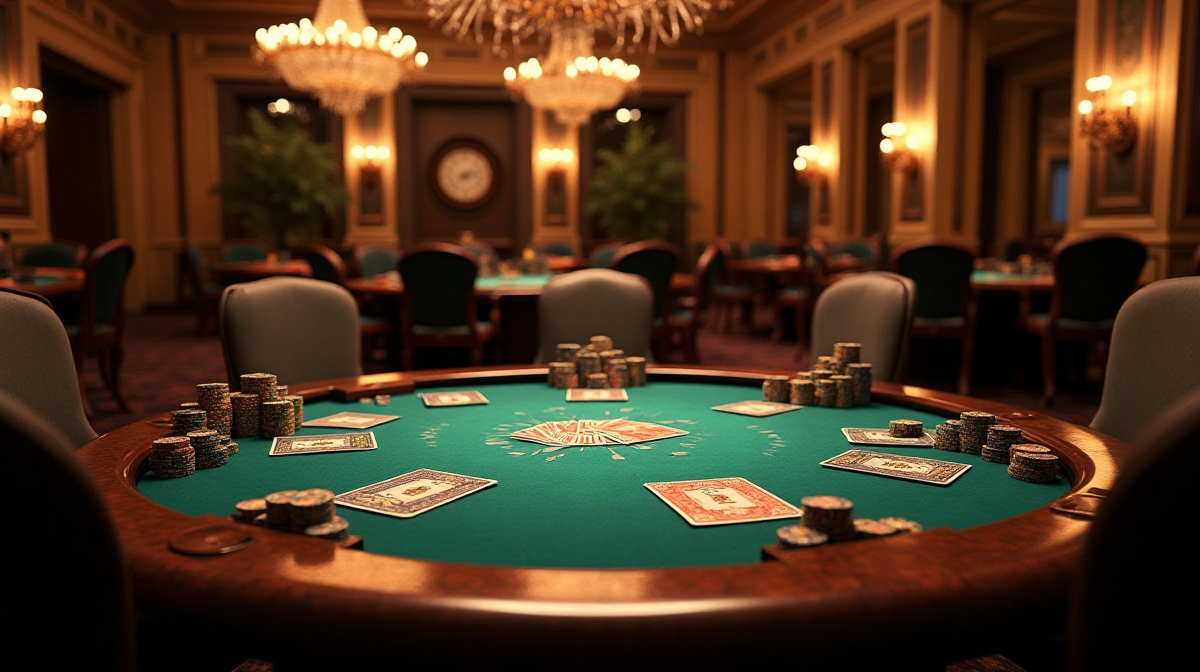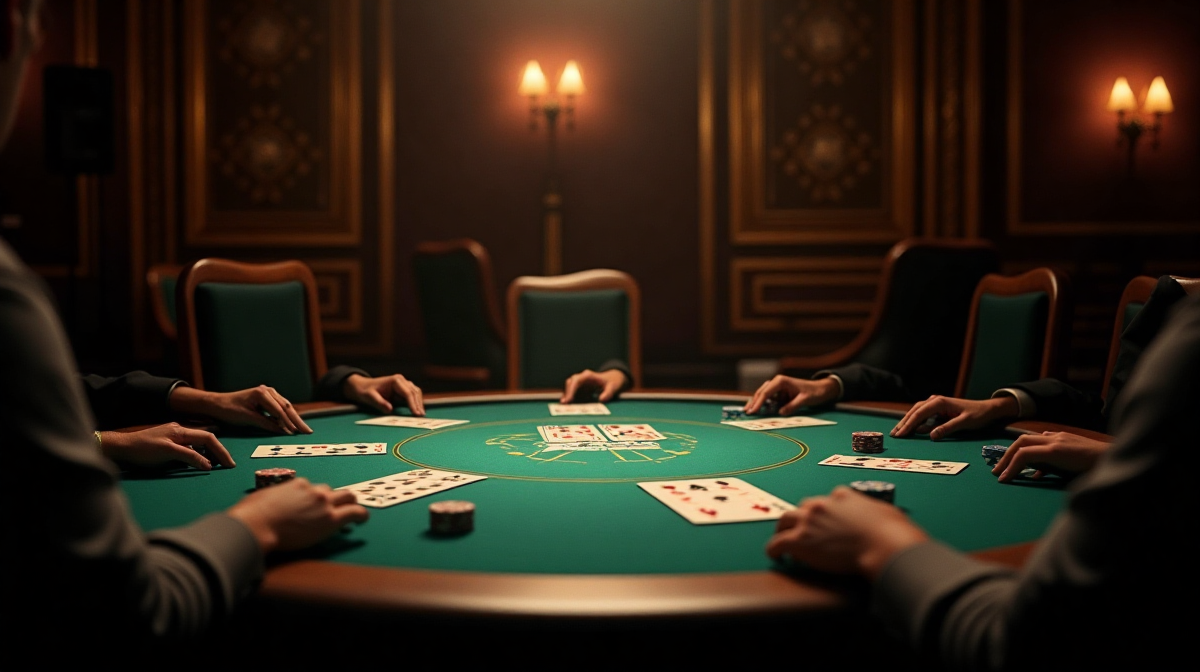Poker Face Meaning: Decode Your Opponents!
What is a Poker Face? A Definition.
The “poker face” is more than just a blank expression; it’s the ability to conceal your true emotions and intentions, particularly in situations involving risk and competition. Originating from the game of poker, where reading opponents is crucial, the poker face is a skill built on controlling both physical and emotional responses. Whether you’re considering a strategy like checking out www 180 mybet tips for an edge, or simply trying to navigate a tough hand, a solid poker face is essential.
Why is a Poker Face Important in Poker ?
In poker, revealing even the slightest hint of your hand's strength can be disastrous. A twitch, a glance, a change in breathing – these are all tells that experienced players can exploit. But the value of a poker face extends far beyond the felt. It’s a powerful tool for negotiation, maintaining composure under pressure, and building trust. Even when considering potential outcomes, such as trying to predict a mybet tomorrow correct score, maintaining a neutral demeanor can prevent opponents from gaining an advantage.
Brief History – Origins & Evolution of the Poker Face.
The concept of concealing emotions during games of skill dates back centuries, but the modern “poker face” truly solidified with the rise in popularity of poker in the 19th and 20th centuries. As the game evolved, so did the sophistication of players’ attempts to read one another. What began as simple observation became an intricate study of human behavior, culminating in the refined art we know today. Platforms like 888 poker have contributed to the game’s evolution, demanding even greater control and deception from players.
Understanding the Core Components of a Poker Face
Physical Control: Mastering Your Body Language
A strong poker face begins with physical control. It’s about minimizing any involuntary reactions that could betray your thoughts.
Microexpressions – The Leaks You Need to Hide.
Microexpressions are fleeting, involuntary facial expressions that reveal a person’s true emotions. They last only a fraction of a second, but skilled observers can detect them. Learning to recognize and suppress your own microexpressions is a core component of mastering the poker face.
Controlling Tells – Hands, Eyes, Breathing, Posture.
Common physical tells include trembling hands, dilated pupils, increased breathing rate, and shifting posture. Consciously controlling these elements requires practice and self-awareness. For example, a tight grip on your chips or avoiding eye contact can signal weakness. Even researching potential bets on mybet shouldn’t visibly impact your composure.
Practice Exercises for Physical Control.
Simple exercises like practicing maintaining a neutral expression in front of a mirror, consciously slowing your breathing, or deliberately controlling your hand movements can significantly improve your physical control.
Emotional Control: The Mental Game
Physical control is only half the battle. Emotional control is equally crucial.
Detachment from Outcomes – Winning & Losing.
Poker, and life, are filled with both wins and losses. Becoming emotionally attached to the outcome of a single hand (or situation) can cloud your judgment and reveal your feelings. The ability to remain detached, to see each hand as an independent event, is essential.
Suppressing Emotional Reactions – Tilt Prevention.
“Tilt” refers to a state of emotional frustration or confusion that leads to poor decision-making. Learning to recognize the early signs of tilt and employing strategies to suppress your emotional reactions is vital.
Mindfulness & Staying Present.
Mindfulness – the practice of focusing on the present moment without judgment – can help you stay grounded and avoid getting carried away by emotions. It allows you to observe your thoughts and feelings without reacting to them, strengthening your emotional control.

Decoding Opponent's Poker Faces: Reading Tells
Common Poker Tells & What They Mean
Identifying your opponents' tells is just as important as concealing your own.
Betting Tells - Sizes, Timing, Hesitation.
The way someone places a bet can reveal a lot. A quick bet often indicates strength, while hesitation might suggest weakness. The size of the bet can also be telling – a large bet could be a bluff, or a sign of a very strong hand.
Physical Tells – Hand Movements, Eye Direction, Breathing Changes.
Observe subtle physical cues. Someone looking away while betting might be trying to conceal their excitement, while rapid breathing could indicate nervousness. Pay attention to hand movements – fidgeting or tightly clenching fists can reveal stress.
Verbal Tells - What Players Say .
What players say, and how they say it, can be revealing. A player who talks excessively about their hand is likely bluffing. A hesitant or rambling explanation can also be a sign of weakness. Knowing when to seek external insights, like www 180 mybet tips, is useful, but don't let it dictate your read.
Recognizing Different Types of Tells
Conscious Tells .
These are deliberate attempts to mislead opponents, such as acting strong when weak or vice versa. These are often more obvious and easier to spot.
Unconscious Tells .
These are involuntary reactions that reveal a player’s true emotions. They are more subtle but often more reliable.
Reverse Tells – When Tells are Misleading.
A reverse tell occurs when a player deliberately uses a tell to mislead opponents into thinking they are bluffing when they actually have a strong hand.
Context is Key: Analyzing Tells Based on Player Type
Tight vs. Loose Players
Tight players play fewer hands and are generally more cautious. Loose players play more hands and are more prone to bluffing. Tells will have different meanings depending on a player’s overall style.
Aggressive vs. Passive Players
Aggressive players bet and raise frequently, while passive players tend to check and call.
Experienced vs. Inexperienced Players
Experienced players are more aware of their tells and are better at controlling them. Inexperienced players are more likely to give away their emotions.

Advanced Poker Face Techniques
Developing a Consistent Baseline
Understanding Your Own Natural Behavior.
Before you can detect deviations in others, you need to understand your own natural behavior. How do you typically sit, breathe, and react in different situations?
Identifying Deviations from the Baseline in Others.
Once you know your own baseline, you can start to identify deviations in your opponents. Any significant change in their behavior could be a tell.
The Art of Deception: Building a Believable Persona.
Strategic Storytelling and Acting.
Craft a believable narrative around your play. Sometimes, acting as if you're frustrated or excited can mislead your opponents.
Using Your Poker Face to Mislead.
Purposefully use your poker face to create false impressions. For example, you might maintain a calm demeanor even when bluffing.
Meta-Gaming: Reading Players Who Are Reading You.
Recognizing When You're Being Read.
Pay attention to how your opponents are reacting to your actions. If they seem to anticipate your moves, they might be reading you.
Adjusting Your Strategy Accordingly.
If you suspect you're being read, adjust your strategy to throw them off. Mix up your play and use reverse tells.
Beyond Poker: Applying the Poker Face in Real Life
Negotiation & Persuasion: Maintaining a Neutral Demeanor.
In negotiations, a poker face can help you maintain control and avoid revealing your bottom line.
High-Pressure Situations: Staying Calm & Composed.
Whether you're giving a presentation or facing a difficult decision, a poker face can help you stay calm and composed.
Building Trust & Credibility: The Power of Controlled Expression.
Controlled expression can convey confidence and trustworthiness, which are essential for building strong relationships.
Conclusion: The Ongoing Pursuit of the Perfect Poker Face
Summary of Key Takeaways.
Mastering the poker face is a lifelong pursuit. It requires self-awareness, emotional control, and constant practice. Remember to focus on both concealing your own tells and decoding your opponents’. Whether you're contemplating a bet based on mybet tomorrow correct score predictions, or simply trying to gain an edge at 888 poker, the principles remain the same.
Resources for Further Learning .
Numerous resources are available to help you improve your poker face, including books on body language, online courses on emotional intelligence, and websites dedicated to poker strategy.
The Importance of Practice & Continuous Improvement.
The only way to truly master the poker face is to practice consistently and seek feedback from others. The more you practice, the more natural and instinctive it will become. Understanding the poker face meaning is just the first step.

